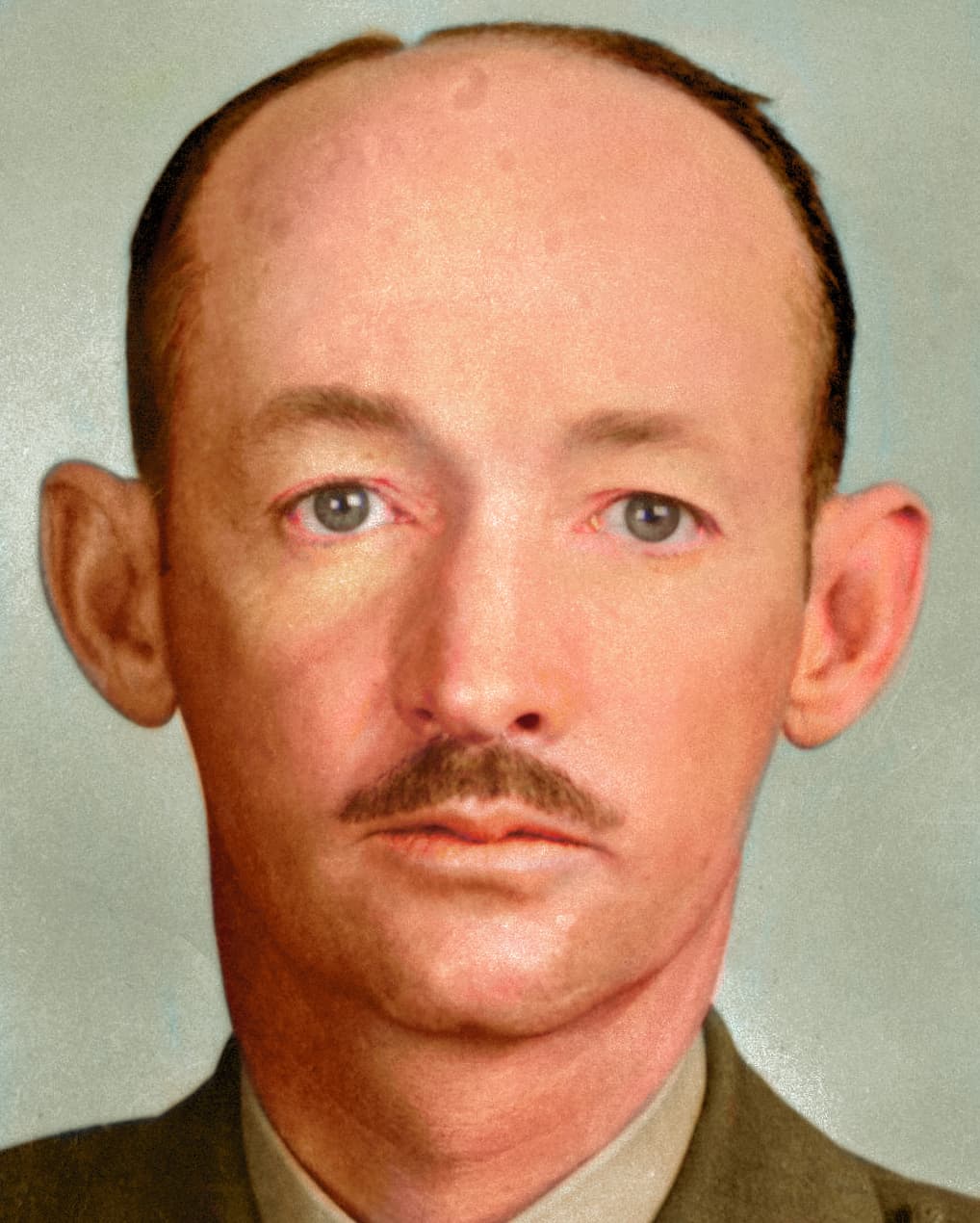U.S. War Department (January 8, 1942)
Communiqué No. 50
Philippine Theater.
Gen. Douglas MacArthur, Commanding General USAFFE, has received reports of widespread damage to defenseless towns in Luzon by Japanese air raids. These attacks took place at various times during the invasion and were without military value to the enemy.
Among the towns mercilessly bombed were Baler, Santa Rosa, Calamba and Tarlac, all of which were completely razed.
Many natives were killed in these attacks. None of these towns contained any military installations. During the last few days, civilians in Arayat, Camiling, San Fernando and other towns were machine-gunned in the streets by low-flying enemy planes.
The Japanese apparently deliberately chose Sundays and religious holidays for these attacks knowing that on such days a large number of civilians would be attending church or on the streets. The first attack was made on Sunday, December 7, 1941, and on each subsequent Sunday and on Christmas and New Year’s Day, enemy air attacks have been particularly heavy.
As was the case in Manila, the churches in the towns and villages were made the special objects of attacks. Each church is an outstanding landmark and its distinctive character is readily apparent, hence the destruction of places of worship was obviously premeditated.
There is nothing to report from other areas.
Communiqué No. 51
Philippine Theater.
Fighting of varying intensity is reported from all sections of the front. These operations are probably preparatory to a large-scale general attack by the enemy.
Japanese reinforcements are being brought up to the front and indications point to a renewal of the offensive by the enemy. Gen. MacArthur reports that the morale and determination of U.S. and Philippine troops are high and that they may be counted on to continue their resistance with skill and courage.
For the first time in several days, there were no enemy air attacks on the fortifications of Manila Bay. Enemy air activity was confined to reconnaissance.
There is nothing to report from other areas.
U.S. Navy Department (January 8, 1942)
Communiqué No. 25
Far East.
The commanding officer of a U.S. submarine of the Asiatic Fleet has reported the sinking of an enemy transport. In addition, this vessel succeeded in sinking three enemy cargo vessels, each estimated to be of 10,000 tons displacement.
Central Pacific.
The defense of Wake Island by U.S. Marines has been cited by the President of the United States as follows:
THE WHITE HOUSE,
Washington, January 5, 1942
Citation by
THE PRESIDENT OF THE UNITED STATES
of
The Wake detachment of the First Defense Battalion, U.S. Marine Corps, under command of Maj. James P. S. Devereux, U.S. Marines
AND
Marine Fighting Squadron 211 Of Marine Aircraft Group 21, under command of Maj. Paul A. Putnam, U.S. Marines
The courageous conduct of the officers and men of these units, who defended Wake Island against an overwhelming superiority of enemy air, sea, and land attacks from December 8 to 22, 1941, has been noted with admiration by their fellow countrymen and the civilized world, and will not be forgotten so long as gallantry and heroism are respected and honored. These units are commended for their devotion to duty and splendid conduct at their battle stations under most adverse conditions.
With limited defensive means against attacks in great force, they manned their shore installations and flew their aircraft so well that five enemy warships were either sunk or severely damaged, many hostile planes shot down, and an unknown number of land troops destroyed.
Wake.
An increase of two Japanese warships – a destroyer and a gunboat – over the originally reported cruiser, submarine, and three destroyers that the Japs lost in the attack on Wake Island, was indicated in two reports to Marine Corps HQ, received from the Pacific area.
These reports were sent from Wake Island by a patrol plane. One, written on December 20, is from Maj. Paul A. Putnam, commanding aviation on Wake. The other is a day-by-day account of marine aviation’s participation in the battle of Wake Island up to December 20 by Maj. W. Bayler.
The day-by-day record of the battle, though not an official report, is Maj. Bayler’s account of what marine aviation and Maj. Devereux’s men did.
Maj. Bayler’s report has but little reference to the Marines on the isle besides the aviation group, but one brief note, “Japs closed into 4,700 yards before 5- and 3-inch guns opened up at point blank range,” indicates a cool courage on the part of Devereux’s men that ranks with the classic it “whites of their eyes” line of Bunker Hill, in the opinion of ranking officers at Marine Corps HQ.
Added to the two Japanese destroyers which were lost in the final phase of the battle of December 22, the new information received brings Japanese losses in taking the island of Wake up to a total of seven warships – one cruiser, four destroyers, one submarine, and one gunboat.
Maj. Bayler was on temporary duty in Wake in connection with the establishment of a base of operations for the Marine Corps Aviation unit. This unit, composed of 12 planes, with pilots, 49 ground personnel, arrived shortly before the outbreak of hostilities. Following is a copy of the penciled notes the major made from the records kept by him and sent to CINCPACFLT. He was present at Wake until December 20.
Synopsis of events (Wake local time), December 8-20
December 8, 7:00 a.m. – 11:58 a.m.
Received word bombing Oahu.
General quarters station. 24 Jap bombers on a northern course hit airdrome in close column of division “V’s” from 3,000 feet. 100-pound fragmentation bombs and simultaneous strafing.
Casualties 25 dead, 7 wounded, 7 airplanes burned, destroyed.
December 9, 11:45 a.m.
27 Japs. Bombed hospital, Camp No. 2. Killed several patients, 3 dead. Got one Jap plane.
December 10, 10:45 a.m.
27 Jap bombers. No casualties.
December 11, 5:00 a.m.
Landing attempt by 12 Jap ships, including light cruisers, destroyers, gunboats, 2 troop or supply ships. Jap casualties: 1 light cruiser, 2 destroyers, 1 gunboat, 2 bombers.
NOTE: That Japs closed in to 4,700 yards before 5- and 3-inch guns opened up at point blank range.
December 12
27 Jap planes bombed Peale and Wake from 22,000 feet. No casualties.
December 13
All quiet.
December 14
32 Jap planes hit airdrome. Two killed, 1 plane down (own destroyed by bombs).
December 15, 11:00 a.m.
Dawn raid by 3 four-engine seaplanes. 27 Jap bombers. Shot down 2 Japs.
December 16, 5:45 p.m.
41 Jap bombers hit Camp 2 and airdrome. Jap four-motor plane raid. One Jap shot down.
December 17
32 Jap bombers at 1317 hit Camp 1, Peale Island, diesel oil supply, mess hall, and pumps of evaporators, Camp 1.
December 18, 11:40 a.m.
One Jap high rec. plane (2 engine) [photo?].
December 19, 10:30 a.m.
Jap bombers hit airport and camp.
December 20
All quiet – first day of bad weather.
TOTAL CASUALTIES:
28 dead, 6 wounded as of Decembe 20 from VMF-211.
NOTES:
- Jap bombers of Dornier type, two-engine, twin-tail, 160 knots.
- Attack formations always in form of line of division V’s in close formation. Excellent air discipline.
- Nine sure Jap bombers shot down; three more possibly. One four-engine boat. 1 CL, 2 DD, 1 gunboat.
Maj. Putnam’s report of operations to his commanding officer in Pearl Harbor goes into more detail on the efforts of the tiny aviation complement to keep the planes that were left after the first attack in the air against each new attack.
Of the original aviation force of 12 officers and 49 enlisted men, 19 enlisted men and 8 officers were still on duty by December 20. Of these, 4 enlisted men and 2 officers were wounded but still on duty. One officer and 6 enlisted men were in the hospital and “doing nicely.” The remainder, 3 officers and 24 men, were dead.
The letter relates that four planes were in the air against the Japs at the time of the first raid. The other eight were on the ground being serviced between flights, and of these seven were destroyed and one was slightly damaged. One of the planes that was in the air later taxied into debris on the field – the wreckage of the first raid – and bent its propeller.
The Marine fighters, up to December 20, had made contact with the enemy seven times, had shot down five Japs in flames, four more had:
…been claimed by pilots but not verified and several are known to have been damaged. Of the four claimed, one was a four-engined seaplane.
Discussing the surface attack of December 11, Putnam reported:
4 airplanes [Marine planes] made a total of 10 attacks, operating in a greatly overloaded condition and performing splendidly… We claim the sinking of 1 ship and serious damage to another.
The guns of Devereux’s force evidently accounted for the remainder of the ships reported destroyed in Maj. Bayler’s synopsis. In the attack on December 11, 1 plane was lost, “a washout on the rocky beach.”
After the attack on December 14, which saw two Marine planes destroyed, “one plane on the ground by enemy action and one crashed on the take-off” the Marines had:
…only two operating airplanes, one of which gives constant trouble so that two planes in the air at one time is the exception rather than the rule.
At one time, only one serviceable plane was left to Maj. Putnam’s squadron, but the mechanics and ground crews evidently made an additional plane, or even planes out of the wreckage of the remainder.
Lauding the work of the ground crews at Wake, Maj. Putnam wrote since that time (the first raid), parts and assemblies have been traded back and forth so that no airplane can be identified. Engines have been traded from plane to plane, have been junked, stripped, rebuilt, and all but created.
Continuing his praise for the men under him, Maj. Putnam wrote:
All hands have behaved splendidly and held up in a manner of which the Marine Corps may well tell. I have no report to make regarding any officer or man being outstanding in bravery or fortitude; they have all acquitted themselves with equal distinction. On the other hand, I particularly wish to comment on the indefatigable labor, and ingenuity, skill, and technical knowledge of Lt. Kinney and Tech. Sgt. Hamilton. It is solely due to their efforts that the squadron is still operating.
Discussing the living conditions on the airdrome as they were on December 11, Maj. Putnam said:
Personnel are living in dugouts made by the contractor’s men and equipment. Not comfortable but adequate against all but direct bomb hits. Feeding is from the contractor’s galley, a truck making the rounds with hot food twice daily. Sanitation is only fair, but so far have had only a mild flurry of diarrhea. Fresh water is adequate for drinking, but salt water is used for all other purposes.
The tone of the entire report indicates no particular anxiety on the part of the air group at Wake. They were there under orders with a job to do. They were doing the job and would continue to do it until circumstances beyond their control forced them to discontinue their efforts. They had kept these circumstances under control for almost 2 weeks and they would continue to do so.
At no time during the siege were more than four Marine planes in operation, Putnam reported, but the verified total that these planes took of the Japanese was one ship, one submarine, and five Jap planes.
There is nothing to report from other areas.



